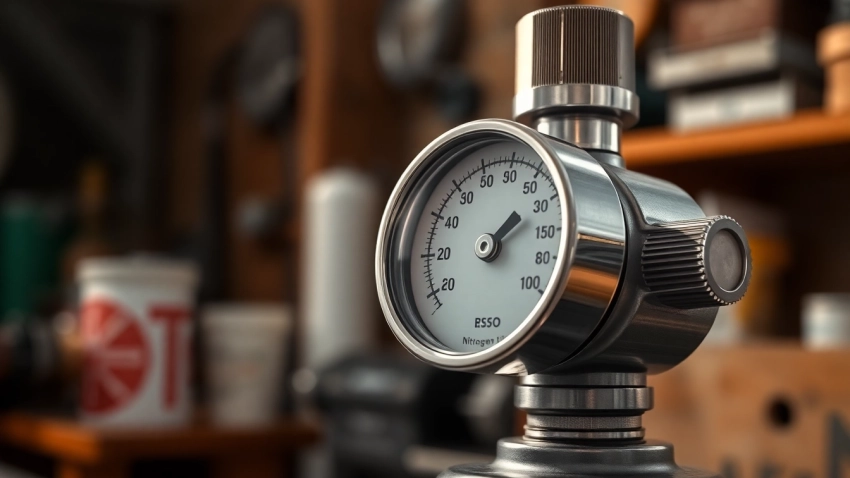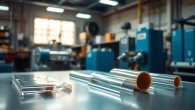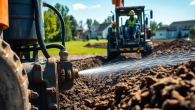
Choosing the Right Nitrogen Regulator: A Comprehensive Guide for Every Application
Understanding Nitrogen Regulators
Nitrogen regulators play a critical role in controlling the pressure of nitrogen gas delivered from storage cylinders to various applications, ensuring precise and safe operation. For those needing a comprehensive understanding of these essential devices, this guide provides in-depth information about nitrogen regulators, including their function, types, and how to select the right one for specific needs. Whether you’re in HVAC, food industry applications, or chemical processing, understanding the nuanced working of a nitrogen regulator can enhance your operational efficiency.
What is a Nitrogen Regulator?
A nitrogen regulator is a device connected to a nitrogen gas cylinder that reduces the high pressure from the cylinder to a more manageable level. This allows precise control of the gas flow essential for various applications, including welding, HVAC systems, and food preservation. The primary purpose of a nitrogen regulator is to ensure that the outlet pressure is consistent and safe for both people and equipment involved in the operation.
How Do Nitrogen Regulators Work?
Nitrogen regulators typically work through an iterative process of reducing and controlling pressure. When high-pressure nitrogen flows from the cylinder into the regulator, it passes through a series of mechanisms designed to lower the pressure to a specified output level. Commonly, this includes a diaphragm that moves in response to pressure changes, allowing gas to escape when pressure exceeds the set point.
Most regulators have a pressure gauge to indicate the current output pressure, enabling users to monitor and adjust as necessary to refine the gas delivery for their applications. The efficiency and reliability of the nitrogen delivery system significantly depend on the accuracy and quality of the nitrogen regulator used.
Key Applications of Nitrogen Regulators
The applications for nitrogen regulators are extensive, ranging across various industries:
- HVAC Systems: Used for testing, purging, and maintaining pressure.
- Food Preservation: Prevents oxidation in packaged foods by replacing air with nitrogen.
- Welding: Stabilizes the nitrogen atmosphere to ensure quality welds in certain types of welding.
- Paints and Coatings: Maintains pressure and enhances the spray of solvents.
- Pharmaceuticals: Provides an inert atmosphere for production and storage.
Types of Nitrogen Regulators
Nitrogen regulators can be categorized based on numerous factors, most notably pressure settings and application types. The right type of regulator depends on your specific needs and the requirements of the system into which it will be integrated.
Single Stage vs. Dual Stage Regulators
One of the primary distinctions between nitrogen regulators is whether they are single-stage or dual-stage:
- Single Stage Regulators: These are generally more straightforward devices that provide direct pressure reduction from the cylinder to the application. Appropriate for lower-pressure setups and applications where precision isn’t as critical.
- Dual Stage Regulators: Designed to offer greater stability and precision, dual-stage regulators reduce high pressure in two steps. This results in far more stable output, even as the cylinder pressure changes. They are favored in applications requiring consistent flow and pressure control.
Low Pressure vs. High Pressure Regulators
Regulators can also be classified by their pressure ratings:
- Low Pressure Regulators: Typically used in applications not exceeding 50 PSI, suited for food service, and beverage applications.
- High Pressure Regulators: Capable of handling pressures exceeding 250 PSI, essential for industrial applications such as welding and equipment testing.
Specialized Nitrogen Regulators for HVAC
Within HVAC systems, specialized nitrogen regulators are employed during the evacuation and charging process of refrigeration systems. These regulators assist in pressure testing gas lines and piping effectively and safely. They ensure that nitrogen is introduced at the correct pressure to protect the system and allow for leak testing without introducing moisture or contaminants.
Choosing the Right Nitrogen Regulator for Your Needs
Selecting the appropriate nitrogen regulator can significantly influence the performance and effectiveness of your application. There are several key factors to consider:
Factors to Consider When Selecting
When choosing a nitrogen regulator, consider the following:
- Application Requirements: Understand the specific pressure and flow rate required for your application. Different setups necessitate different regulators.
- Material Compatibility: Ensuring that the regulator materials can withstand the operational environment and are compatible with nitrogen is crucial for longevity.
- Type of Attachment: Confirm the type of connection (CGA connections) you require for compatibility with your nitrogen cylinder.
Applications and Compatibility
It is essential to match your regulator with the intended application. Whether for HVAC, food and beverage, or other industrial uses, understanding the application requirements will dictate the type of regulator needed. Consider whether you’ll require a dual-stage regulator for more demanding applications or a single-stage regulator for simple tasks.
Understanding Specifications and Ratings
Each nitrogen regulator comes with specifications that define its performance capabilities. These include:
- Flow Rate: The maximum flow of nitrogen the regulator can handle.
- Pressure Rating: The capabilities determine the highest and lowest pressures the regulator can manage.
- Temperature Ratings: Certain regulators might be rated for specific temperature ranges, which are essential in environments with varying temperatures.
Installation and Maintenance
Proper installation and regular maintenance of nitrogen regulators ensure they perform optimally and safely. Here’s a closer look.
Step-by-Step Installation Guide
Installing a nitrogen regulator is straightforward, but safety is paramount:
- Ensure the cylinder valve is closed before beginning.
- Inspect the regulator for any signs of damage and ensure it is clean.
- Connect the regulator to the nitrogen cylinder, ensuring the proper thread type and connection.
- Open the cylinder valve slightly to allow gas flow, then check for leaks using a leak detection solution.
- Adjust the regulator to the desired pressure before connecting any downstream equipment.
Regular Maintenance Tips for Longevity
To ensure longevity and peak performance of nitrogen regulators, follow these maintenance recommendations:
- Regularly check for gas leaks or faulty parts.
- Clean the regulator regularly with suitable solvents.
- Store regulators in a cool, dry place to prevent damage when not in use.
- Replace worn seals or gaskets as part of regular inspections.
Common Issues and Troubleshooting
Here are some common issues faced with nitrogen regulators and their respective troubleshooting steps:
- Unstable Pressure: This may indicate a faulty regulator diaphragm, requiring inspection or replacement.
- Leaks: Conduct a thorough inspection of all connections and seals; replace damaged parts immediately.
- Inconsistent Flow: Check for blockages in hoses or fittings leading to the regulator.
Understanding the Costs of Nitrogen Regulators
Understanding the various factors that influence the costs of nitrogen regulators can help guide purchasing decisions.
Pricing Factors: What Influences Cost?
The price of nitrogen regulators can vary significantly based on several factors:
- Type of Regulator: Single-stage regulators are typically less expensive than dual-stage models due to their simplicity.
- Material: Regulators made from premium materials may come at a higher cost, reflecting durability and longevity.
- Brand Reputation: Established brands may charge a premium based on reputation and trust.
Comparing Brands and Models for Value
When purchasing, comparison of various models and brands is vital. Look for user reviews, specifications that match your needs, and warranties provided. Evaluating multiple options can ensure that you get the best value for your investment.
Purchasing Options: Where to Buy?
Nitrogen regulators can be purchased from various retailers, both online and in-store. Building rapport with local suppliers can provide maintenance tips and product guidance over time. It is also advisable to consider purchasing from specialized industrial supply sites, ensuring the product’s specifications meet your operational needs.












Leave a Reply